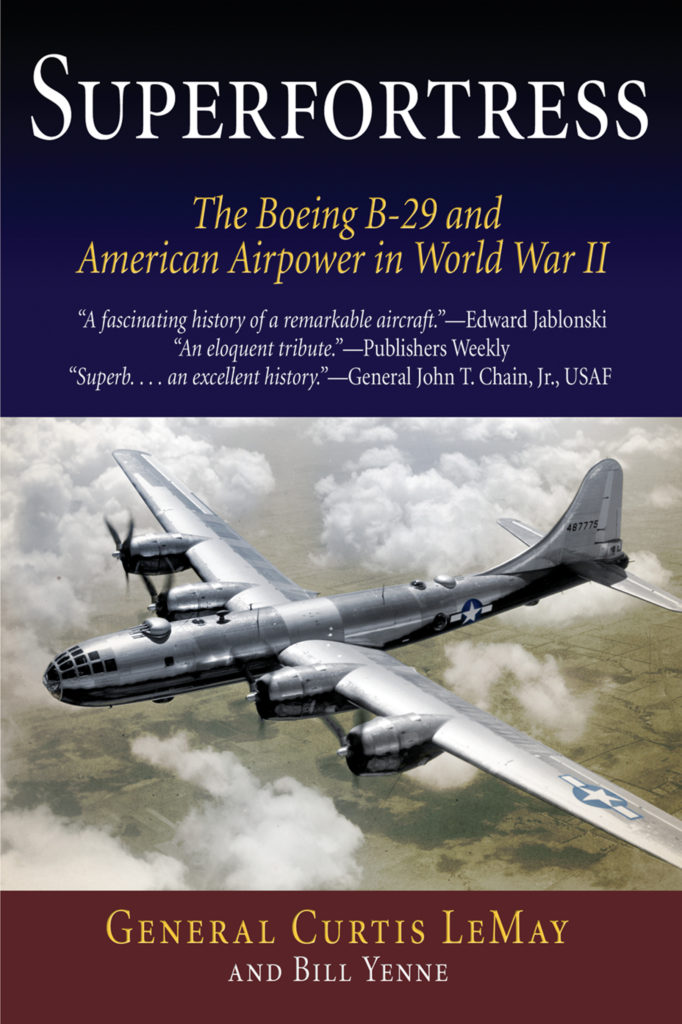

Superfortress
The Boeing B-29 and American Airpower in World War II
Select Your Format:
Paperback$26.00eBook
$26.00 Add to Cart Save 25% on every book by joining our Book Club


Select Your Format:
PaperbackA First-Hand Account of the Design, Development, and Deployment of the Most Advanced Bomber Aircraft of World War II
Among the most sophisticated aircraft flown during World War II, the Boeing B-29 Superfortress was designed to replace the B-17 as the primary long-range bomber of the U.S. Army Air Forces. With its distinctive glazed nose and long, thin wings that provided both speed at high altitude and stability at takeoff and landing, the Superfortress was the first operational bomber with a pressurized crew cabin and featured advanced radar and avionics. Armed with remote-controlled machine gun turrets and a 20,000 pound bomb load, it was the first USAAF bomber capable of mastering the vast distances of the Pacific Theater of World War II. The prototype flew in September 1942 but a series of post-production modifications delayed the bomber’s first mission until April 1944. Superfortresses began attacking Japan in daylight with conventional ordnance from high altitude, but their mission was redirected in March 1945, with massive low-level formations dropping incendiary bombs! at night on Japanese cities. The ensuing firestorms, followed by the complete destruction of Hiroshima and Nagasaki by atomic bombs dropped from two specially modified “silverplate” B-29s, forced Japan to cease fighting.
Written by the man who led the B-29 into combat, Superfortress: The Boeing B-29 and American Airpower in World War II is an important document of one of the most turbulent times in world history. General Curtis LeMay recalls the early debate about whether or not the United States needed a long-range bomber, how the B-29 was created and produced despite the enormous logistical difficulties of the design, and the decision to conduct fire-bombings against Japan and ultimately drop the atomic bomb. Highly praised when it was first published, this new edition is complete with photographs, a new introduction, and statistical tables.
Curtis Emerson LeMay (1906-90) commanded the XXI Bomber Command during World War II. He headed the Berlin Airlift in 1948 and reorganized Strategic Air Command during the Cold War.
Bill Yenne is a San Francisco-based author of many books on military and aviation history.
“A fascinating history of a remarkable aircraft.”—Edward Jablonski
“An eloquent tribute.”—Publishers Weekly
“Superb. . . . an excellent history.”—General John T. Chain, Jr. USAF